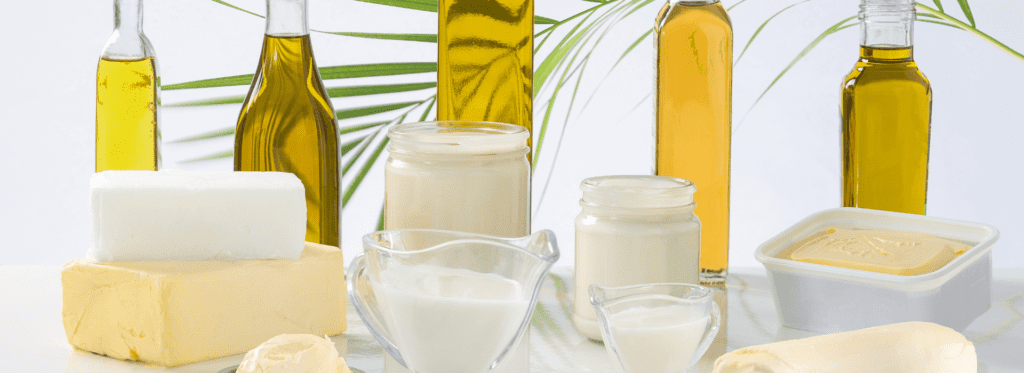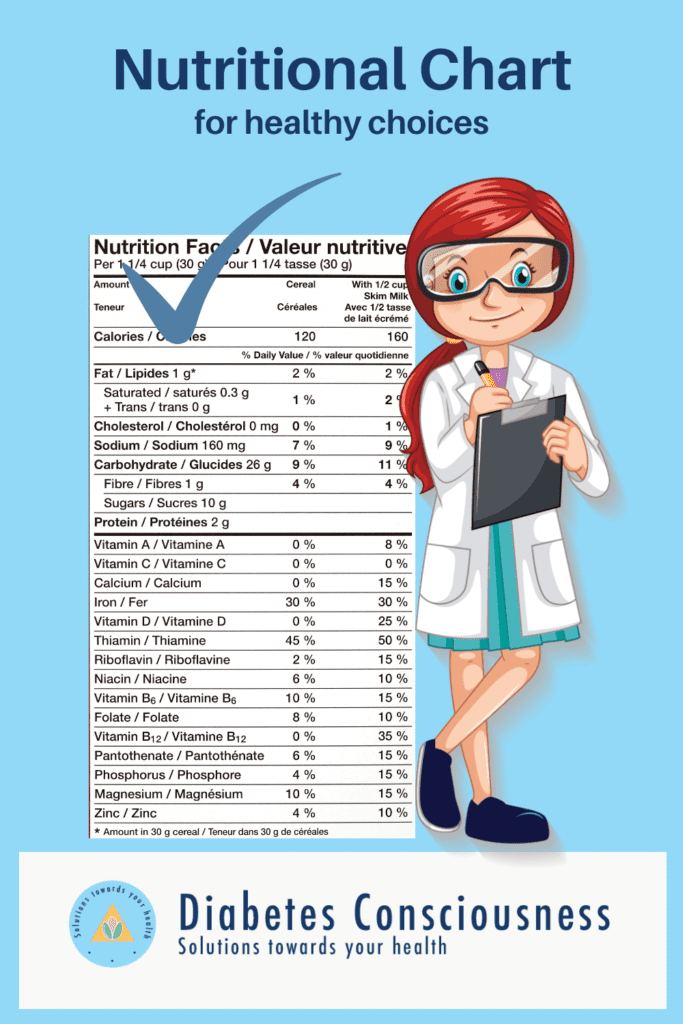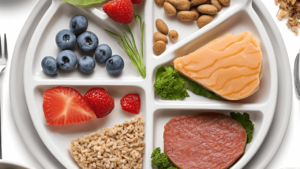
21 tips you should know to live a full and healthy life with diabetes.
Tabla de contenidos
Hi! We are Diabetes Consciousness; we are here to help you find solutions towards health.
Reading the nutritional charts can help you make healthy choices. Tell you about the nutrition facts about the foods you buy. Food labels give you information about:
✔ The Calories
✔ Number of servings
✔ Nutrient content of packaged foods.

What is important to Look for?
These three things are essential:
1- Always check first the portion size that is calculated when consuming that food.
2- Remember that all nutritional chart information is based on the serving size.
3- Most packages contain more than one serving.
For example, spaghetti’s 🍜 serving size is often 2 ounces (56 grams) uncooked or 1 cup (0.24 liters) cooked. If you eat 2 cups (0.48 liters) at a meal, you eat 2 servings. That is 2 times the amount of calories, fats, and other nutrients listed on the nutritional charts.
☝ The calorie information tells you the number of calories in 1 serving. Adjust the number of calories if you eat smaller or larger portions. This number will help you determine how foods affect your weight.
Total carbohydrate is listed in bold print to stand out and is measured in grams (g). Sugar, starch, and 🥗 vegetable fiber comprise the total carbohydrate listed on the nutritional charts. Sugar is listed separately. All of these carbohydrates, except fiber, raise your blood sugar.

If you have diabetes and count carbohydrates to calculate insulin doses, use the total amount of carbohydrates to ⚖ calculate your insulin doses. It is best to buy foods with at least 3 to 4 grams of vegetable fiber per serving.
Choose foods that are low in saturated fat. For example, 🐟 fish is much lower in saturated fat than beef.
If a food has less than 0.5 grams of saturated fat in the serving size on the nutritional charts, the manufacturer of that food may say it contains no saturated fat. If you eat more than one serving, ✖ multiply the values.
Trans fats on nutritional charts raise your “bad” ❌ cholesterol and lower your “good” ✅ cholesterol. If a food contains these fats, the amount will appear on the nutritional charts below the total fat. Fats are measured in grams. Look for foods with not or low trans fats (1 gram or less).

For people trying to eat less salt 🧂 in their diet, it is helpful to know the amount of sodium in foods. You should consume less than 2,300 mg of sodium per day, equivalent to 1 teaspoon of table salt.
The percent daily value is listed on the nutritional charts 📝 as a guideline for people consuming 2,000 calories daily. Keep this in mind if your daily calorie goals are different.
We hope this information brings something new and valuable to your life. 😃
—————————————–
Reading the nutritional charts can help you make healthy choices. Tell you about the nutrition facts about the foods you buy. Food labels give you information about:
✔ The Calories
✔ Number of servings
✔ Nutrient content of packaged foods.
https://link.diabetesconsciousness.com/blog-dcss
—————————————–

https://link.diabetesconsciousness.com/youtube-consciousness
—————————————–
Our audience keep searching daily for:



























—————————————–
You are probably looking for something like:








































—————————————–
BUSINESS INQUIRES:
Contact our support email: diabetesconsciousness.sk@gmail.com
https://link.diabetesconsciousness.com/bio

https://link.diabetesconsciousness.com/youtube-consciousness
BLOG:






